2,2-Bis(bromomethyl)-1,3-propanediol

2,2-Bis(bromomethyl)-1,3-propanediol structure
|
Common Name | 2,2-Bis(bromomethyl)-1,3-propanediol | ||
|---|---|---|---|---|
| CAS Number | 3296-90-0 | Molecular Weight | 261.940 | |
| Density | 2.0±0.1 g/cm3 | Boiling Point | 370.9±42.0 °C at 760 mmHg | |
| Molecular Formula | C5H10Br2O2 | Melting Point | 112-114 °C(lit.) | |
| MSDS | Chinese USA | Flash Point | 178.1±27.9 °C | |
| Symbol |


GHS07, GHS08 |
Signal Word | Warning | |
| Name | 2,2-Bis(bromomethyl)propane-1,3-diol |
|---|---|
| Synonym | More Synonyms |
| Density | 2.0±0.1 g/cm3 |
|---|---|
| Boiling Point | 370.9±42.0 °C at 760 mmHg |
| Melting Point | 112-114 °C(lit.) |
| Molecular Formula | C5H10Br2O2 |
| Molecular Weight | 261.940 |
| Flash Point | 178.1±27.9 °C |
| Exact Mass | 259.904755 |
| PSA | 40.46000 |
| LogP | 0.38 |
| Vapour Pressure | 0.0±1.9 mmHg at 25°C |
| Index of Refraction | 1.574 |
| InChIKey | CHUGKEQJSLOLHL-UHFFFAOYSA-N |
| SMILES | OCC(CO)(CBr)CBr |
CHEMICAL IDENTIFICATION
HEALTH HAZARD DATAACUTE TOXICITY DATA
MUTATION DATA
|
| Symbol |


GHS07, GHS08 |
|---|---|
| Signal Word | Warning |
| Hazard Statements | H302-H315-H319-H335-H351 |
| Precautionary Statements | P280-P301 + P312 + P330-P305 + P351 + P338 |
| Personal Protective Equipment | Eyeshields;full-face particle respirator type N100 (US);Gloves;respirator cartridge type N100 (US);type P1 (EN143) respirator filter;type P3 (EN 143) respirator cartridges |
| Hazard Codes | T:Toxic; |
| Risk Phrases | R45;R36/37/38 |
| Safety Phrases | S53-S23-S26-S36/37/39-S45-S36/37 |
| RIDADR | 2811 |
| WGK Germany | 3 |
| RTECS | TY3195500 |
| HS Code | 2905590090 |
| Precursor 4 | |
|---|---|
| DownStream 10 | |
| HS Code | 2905590090 |
|---|---|
| Summary | 2905590090 other halogenated, sulphonated, nitrated or nitrosated derivatives of acyclic alcohols。Supervision conditions:None。VAT:17.0%。Tax rebate rate:9.0%。MFN tariff:5.5%。General tariff:30.0% |
|
The utility of the guppy (Poecilia reticulata) and medaka (Oryzias latipes) in evaluation of chemicals for carcinogenicity.
Toxicol. Sci. 92(1) , 143-56, (2006) There has been considerable interest in the use of small fish models for detecting potential environmental carcinogens. In this study, both guppies (Poecilia reticulata) and medaka (Oryzias latipes) w... |
|
|
NTP carcinogenesis studies of 2,2-bis(bromomethyl)-1,3-propanediol, nitromethane, and 1,2,3-trichloropropane (cas nos. 3296-90-0, 75-52-5, and 96-18-4) in guppies (Poecilia reticulata) and medaka (Oryzias latipes) (Waterborne Studies).
Natl. Toxicol. Program Tech. Rep. Ser. (528) , 1-190, (2005) The NTP chose to initiate studies in fish as an exploration of alternate or additional models for examining chemical toxicity and carcinogenicity. The use of small fish species in carcinogenicity test... |
|
|
Use of the Japanese medaka (Oryzias latipes) and guppy (Poecilia reticulata) in carcinogenesis testing under national toxicology program protocols.
Toxicol. Pathol. 31 Suppl , 88-91, (2003) A need exists for whole animal toxicity, mutagenesis, and carcinogenesis models that are alternative to the traditional rodent test models and that are economical, sensitive, and scientifically accept... |
| FR 1138 |
| Dibromopentaerythritol |
| Pentaerythritol dibromohydrin |
| 2,2-Bis(bromomethyl)-1,3-propanediol |
| EINECS 221-967-7 |
| MFCD00004688 |
| Dibromoneopentyl Glycol |
| 2,2-Bis(bromomethyl)propane-1,3-diol |
| 1,3-Propanediol, 2,2-bis(bromomethyl)- |
| Pentaerythritol dibromide |
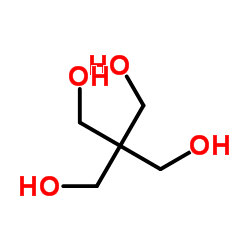 CAS#:115-77-5
CAS#:115-77-5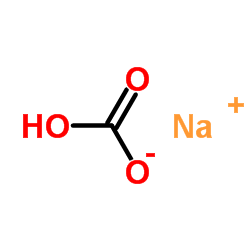 CAS#:144-55-8
CAS#:144-55-8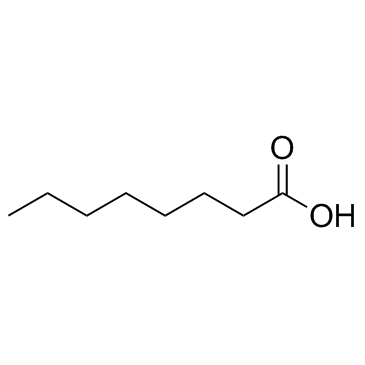 CAS#:124-07-2
CAS#:124-07-2 CAS#:10035-10-6
CAS#:10035-10-6 CAS#:43153-20-4
CAS#:43153-20-4 CAS#:42941-62-8
CAS#:42941-62-8 CAS#:3229-00-3
CAS#:3229-00-3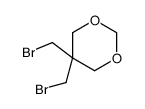 CAS#:22633-46-1
CAS#:22633-46-1![2-(hydroxymethyl)-2-[(2-methoxy-4-prop-2-enylphenoxy)methyl]propane-1,3-diol structure](https://image.chemsrc.com/caspic/328/101101-44-4.png) CAS#:101101-44-4
CAS#:101101-44-4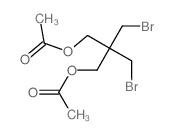 CAS#:3492-43-1
CAS#:3492-43-1 CAS#:1522-92-5
CAS#:1522-92-5![[3-(bromomethyl)oxetan-3-yl]methanol structure](https://image.chemsrc.com/caspic/459/22633-44-9.png) CAS#:22633-44-9
CAS#:22633-44-9![2,6-Dioxaspiro[3.3]heptane structure](https://image.chemsrc.com/caspic/428/174-79-8.png) CAS#:174-79-8
CAS#:174-79-8 CAS#:3733-29-7
CAS#:3733-29-7
